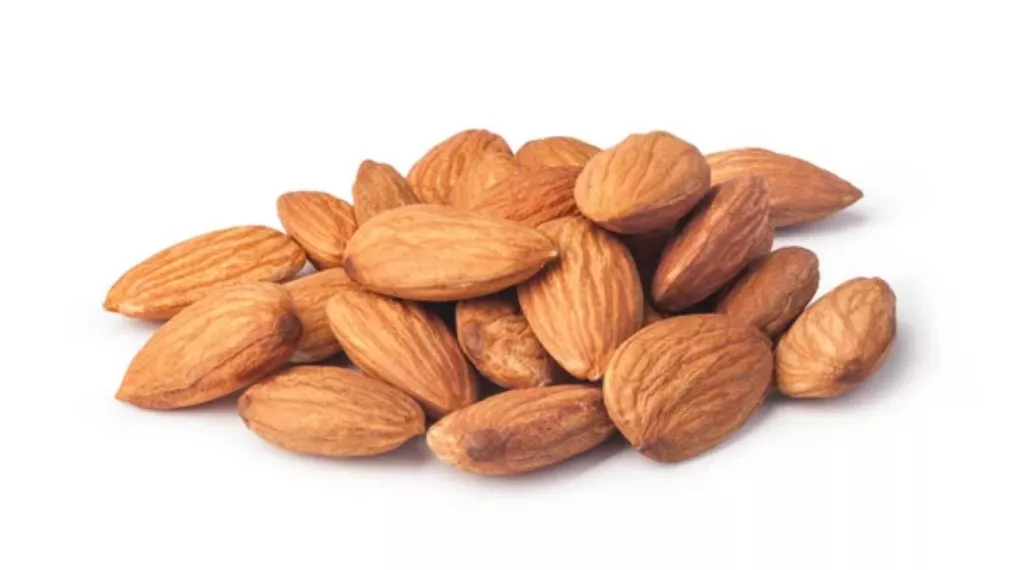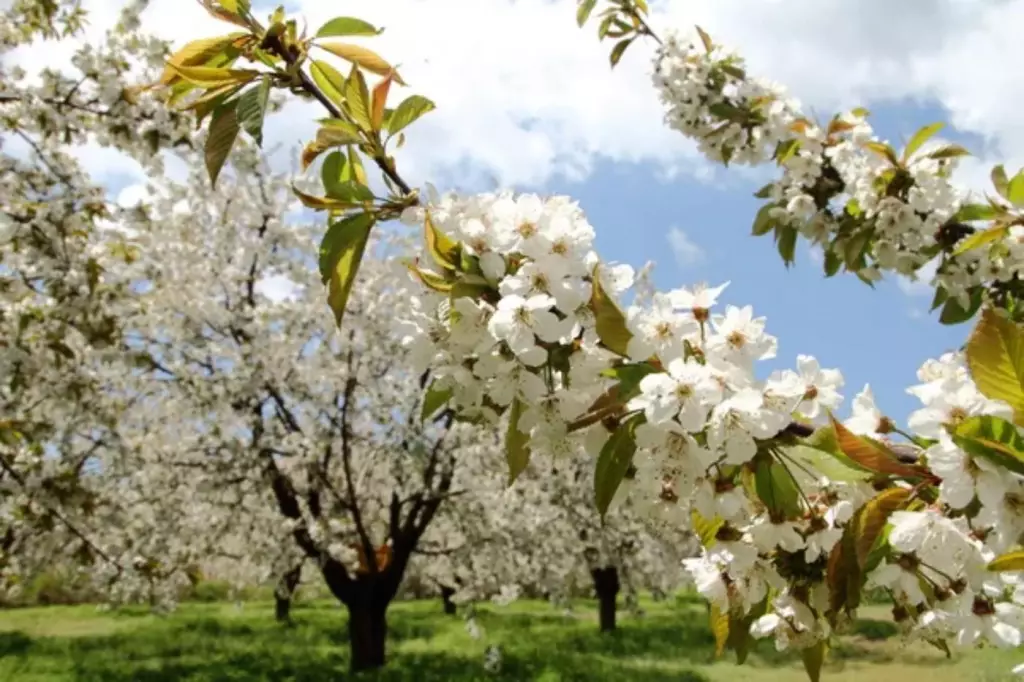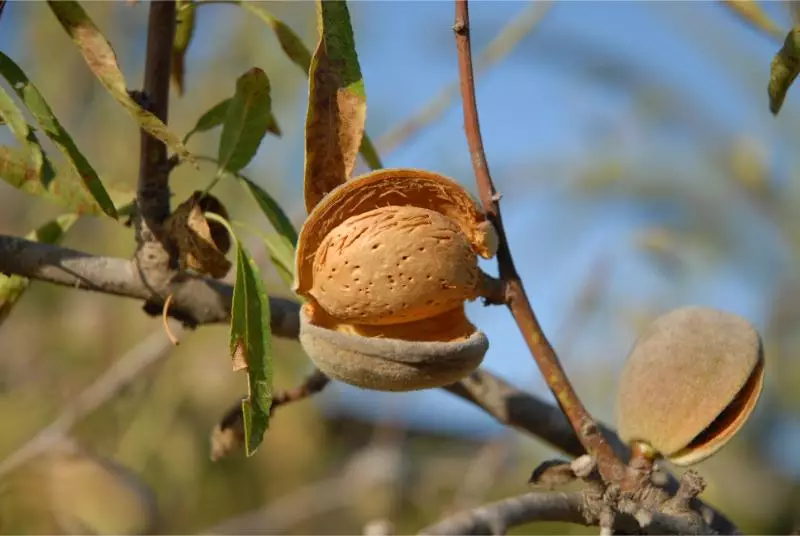Average Almond Yield per Acre: What to Expect
Almond yields can vary significantly depending on many factors, such as variety, climate, soil conditions, and farming practices. In this article, we will provide an overview of average almond yields and discuss what factors most impact yields on individual farms.
The average yield from an acre of almonds ranges from 1,500 to 3,000 pounds. Nonpareil almond yields are typically around 2,000–2,500 pounds per acre, while varieties like Lorna and Monterey tend to have higher yields, around 2,500–3,000 pounds per acre.
The difference in yield of different almond varieties is attributed to their varying levels of resistance to pests and diseases and harsh environmental conditions. Some varieties may be more tolerant of heat or drought, while others may be more susceptible to frost damage. Let's see what other factors influence almond yield per acre.
Summary
- The Lorna variety of almonds stands out for its high yield per acre (2,500–3,000 pounds) and is prized for its large, plump kernels and rich, buttery flavor, making it a popular choice for both commercial and home use.
- The Butte variety is notable for being a high-yielding, disease-resistant almond variety, producing an average yield of 2,500–3,500 pounds per acre.
- The United States, particularly California, stands out as the largest producer of almonds in the world, attributed to the ideal Mediterranean climate, advanced farming techniques, and the adoption of sustainable and environmentally friendly farming practices.
- Almond trees typically require a specific amount of chilling hours (300 to 600 hours of temperatures between 32°F and 45°F), as the inadequacy of chilling hours can lead to lower yields by affecting pollination and fruit set.
- Drip irrigation is the most efficient method for delivering water to almond trees, as it reduces water waste and ensures that water is delivered directly to the tree's root zone.

On this page:
Key Almond Varieties and Their Average Yield per Acre
The table below outlines the estimated yield per acre for various almond varieties:
| Almond Variety | Estimated Yield per Acre |
|---|---|
| Nonpareil | 2,000-2,500 pounds |
| Lorna | 2,500-3,000 pounds |
| Monterey | 2,500-3,000 pounds |
| Carmel | 2,500-3,000 pounds |
| Butte | 2,500-3,000 pounds |
Yield per acre for Nonpareil variety
The Nonpareil variety is the most popular almond variety for its high quality, large kernels, and good taste. As you might have guessed, this variety's name translates to "unrivaled" in French. They are often used in confectionery and snacking applications due to their attractive appearance and delicate taste.

When you grow Nonpareil almonds, you can expect a relatively early harvest. However, keep in mind that this variety is susceptible to disease and frost resulting in lower yields compared to other varieties.
For this reason, it requires extra care in certain regions due to its vulnerability to these environmental factors.
Yield per acre for Lorna variety
Lorna almonds are prized for their large, plump kernels and rich, buttery flavor. These almonds are often used in gourmet and artisanal food products, as well as in premium nut mixes and confections.
The Lorna variety of almonds is known for its high yield per acre, making it an economically valuable choice for almond growers.
In addition to its culinary uses, the Lorna almond is also sought after for its versatility in the production of almond-based products such as almond milk, almond flour, and almond butter.
Its large, plump kernels and rich flavor make it a popular choice for both commercial and home use, and its adaptability to various growing conditions further adds to its appeal to farmers.
Yield per acre for Monterey variety
Monterey is a widely planted almond variety due to its similarities to Nonpareil, with slightly smaller kernels. Monterey almonds are similar to Nonpareil in appearance, but they have a slightly more robust flavor.
They are commonly used in a wide range of almond-based products, including almond milk, almond flour, and almond butter.
They have a late bloom time which helps protect the buds from frost, making them a safe choice for you if you face harsher weather. The trees can produce a high yield, with almonds having a pleasant flavor and appearance.

Yield per acre for Carmel variety
If you're looking for a high-yielding, medium-size kernel, the Carmel variety might be the one for you. It blooms later compared to Nonpareil, offering better frost resistance.
Carmel almonds are characterized by their elongated, narrow shape and slightly darker color. They have a rich, nutty flavor and are often used in baking, cooking, and as a standalone snack. They are versatile and can be blanched, sliced, and diced easily.
Yield per acre for Butte variety
If you're interested in a high-yielding, disease-resistant almond variety, you might want to consider the Butte variety. It produces an average yield of 2,500-3,500 pounds per acre or approximately 60-85 pounds per tree.
With a selling price of around $2.25 per pound, your estimated revenue per tree could be between $135 and $191.25. Butte almonds have a good kernel size and are often paired with another almond variety, such as Padre, to ensure adequate pollination.
Butte almonds are known for their uniform size and shape, making them ideal for processing into almond products such as almond oil, almond paste, and almond meal. They have a slightly sweet and nutty flavor that makes them versatile for various culinary applications.
If you want to learn the almond yield per tree for these different varieties, you might want to check this article.
Average Almond Yield per Acre for Different Regions
The table below shows some average almond yield trends per acre for different countries:
| Country | Estimated Average Almond Yield per Acre |
|---|---|
| US (California) | 2,270 pounds |
| Australia | 2,640 pounds |
| Spain | 1,760 pounds |
The global almond yield has been steadily increasing over the years. In 2019, the global average yield was 1,900 pounds per acre.
This figure has increased by 10% since 2010, attributed to the adoption of advanced farming practices, such as precision irrigation and pest management.
Average almond yield in the US
The United States is the largest producer of almonds in the world. The West Coast region of the US earns an estimated profit of $5,000 per acre for almonds.
In 2021, the forecasted yield for California, which produces 100% of the US almonds, was 2,410 pounds per acre. This figure is 3% lower than the 2020 yield of 2,490 pounds per acre because of the dry winter throughout California in 2021.
California's Central Valley, where the majority of US almonds are grown, offers an ideal Mediterranean climate with long, hot summers and mild, wet winters. This climate provides the necessary conditions for almond trees to thrive and produce high yields.

US almond growers also utilize advanced farming techniques, including precision irrigation, mechanized harvesting, and modern orchard management practices. These techniques contribute to efficient resource utilization and optimal growing conditions for almond trees.
They have also increasingly embraced sustainable and environmentally friendly farming practices, such as water-efficient irrigation systems, integrated pest management, and soil conservation measures. These practices contribute to the long-term viability of almond production in the country.
Average almond yield in Spain
Spain is the second-largest producer of almonds in the world, and the largest in Europe. In 2019, the average yield in Spain was 1,300 pounds per acre.
This figure is slightly lower than the global average yield because traditional farming practices are still in use in many parts of Spain.
These traditional practices may not fully leverage modern agricultural techniques and technologies, leading to a lower average yield compared to regions with more advanced farming methods.
Despite the lower average yield, Spain remains the second-largest producer of almonds in the world and the largest in Europe. The country's favorable climate, particularly in regions such as Andalusia and Valencia, provides suitable conditions for almond cultivation.
Additionally, ongoing efforts to modernize farming practices and adopt more efficient techniques are expected to contribute to improved yields in the future.
Average almond yield in Australia
Australia is another large producer of almonds in the world. In 2019, the average yield in Australia was 2,200 pounds per acre. This can be attributed to the adoption of advanced farming practices, including precision irrigation and effective pest management.
These practices have contributed to increased productivity and efficiency in almond cultivation, leading to higher yields compared to the global average.
The country's climate, particularly in regions such as South Australia and Victoria, provides the necessary conditions for almond trees to thrive.
Additionally, the availability of advanced farming techniques and infrastructure, such as precision irrigation and pest management, has further enhanced the suitability of Australian land for almond production.
Factors Influencing Almond Yield
Almond yield per acre can be influenced by several factors such as the following:
Soil quality helps determine almond yield
Almonds grow best in well-draining soils with a pH between 6.0 and 7.0. Soil that is too acidic or too alkaline can negatively affect the growth and yield of almond trees.
Additionally, poor soil fertility can lead to stunted growth and lower yields. To ensure optimal soil quality, soil testing should be done regularly, and appropriate soil amendments should be made.
Sandy loam soil is a well-draining soil that has a low water-holding capacity and can support between 110 to 140 almond trees per acre. You can get to know more about the best types of soil for growing almonds in this article.
Weather conditions can significantly impact almond yield
Almond trees require a specific amount of chilling hours during the winter months to produce a good crop. If the winter is too warm, the trees may not receive enough chilling hours, resulting in lower yields.
Similarly, if the spring is too wet or too dry, it can negatively affect the pollination and fruit set of almond trees, leading to lower yields.

Irrigation is critical to the growth and yield of almond trees
Almond trees require regular and consistent watering throughout the growing season to produce a good crop. Overwatering or underwatering can negatively impact yield.
Additionally, the method of irrigation used can also impact yield. Drip irrigation is the most efficient method for delivering water to almond trees, as it reduces water waste and ensures that water is delivered directly to the tree's root zone.
Pests and diseases can also affect almond yield
Regular monitoring and appropriate pest management practices are essential to maintain healthy trees and maximize yield.
Integrated pest management (IPM) is a holistic approach to pest control that utilizes a combination of cultural, biological, and chemical control methods to manage pests and diseases effectively. By implementing an IPM program, you can help ensure that your almond trees are healthy and productive.
Improved Farming Practices to Enhance Almond Yield
One way to improve your yield is by implementing improved farming practices like proper irrigation, fertilization, and pest management.
By making sure your trees are getting the nutrients and water they need, and by keeping pests under control, you can help ensure a healthy and productive crop.
Here are some tips for improving your almond yield through better farming practices:
- Test your soil regularly to make sure it has the right pH balance and nutrient levels.
- Use drip irrigation to provide your trees with a consistent supply of water.
- Use fertilizers that are specifically formulated for almond trees.
- Control pests through integrated pest management techniques, such as using natural predators or pheromone traps.
Take advantage of technological advancements
There are a number of tools and technologies available today that can help you grow healthier, more productive almond trees, and here are some examples:
- Precision agriculture tools, such as drones and satellite imagery, can help you monitor your trees and identify areas that need attention.
- Soil moisture sensors can help you optimize your irrigation schedule and ensure that your trees are getting the right amount of water.
- Automated pruning machines can help you prune your trees more efficiently and effectively, leading to healthier and more productive trees.
- Improved harvesting equipment can help you harvest your crop more quickly and efficiently, reducing the risk of damage to the nuts.